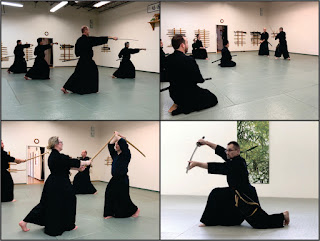
In the June 2018 issue of our dojo journal, Sword and Spirit , I presented an essay titled “21st Century Kenjutsu,” which discussed the significant and wide range of practical benefits to be derived by training in the seemingly anachronistic, even obsolete art of combative Japanese swordsmanship. Now that our kenjutsu-kai is one of the very few groups in the world authorized by the headquarters dojo in Japan to offer authentic training in Ono-ha Itto-ryu, the potential benefits to be gained are even greater. But, what about iaido? This art of solo forms using the Japanese katana is the other legitimate, koryu form of Japanese swordsmanship practiced at Itten Dojo — we train under the guidance of Nicklaus Suino Sensei (Japanese Martial Arts Center, Ann Arbor, Michigan) . Compared to kenjutsu, the benefits are if anything less obvious. The reality, though, is the benefits of iaido are equally broad and deep — similar in some ways and different in others, but with unique attributes...

